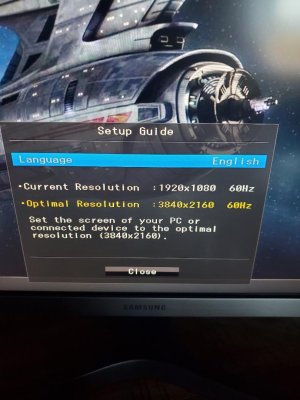I have a 980TI and the cable is HDMI to DisplayPort.
I bought it because it will run a res of 3840x2160. But windows 11 says recommended res is 1920X1080.
DO I have another way to possibly fix this?
In the Nvidia Control Panel, it states a connection of HDMI - HDTV
I bought it because it will run a res of 3840x2160. But windows 11 says recommended res is 1920X1080.
DO I have another way to possibly fix this?
In the Nvidia Control Panel, it states a connection of HDMI - HDTV
![[H]ard|Forum](/styles/hardforum/xenforo/logo_dark.png)
